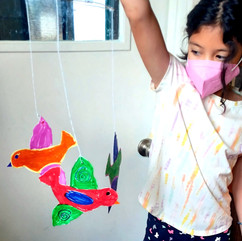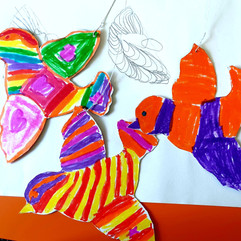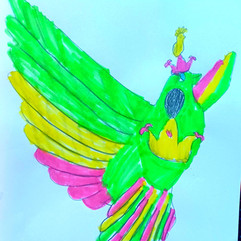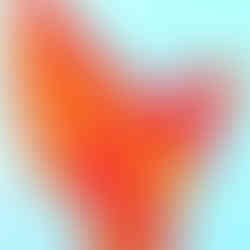Da Vinci's Bird Drawings
Leonardo Da Vinci's Bird Studies

The art that we studied this Summer had one major theme in common, and that was a love and reverence for nature. Leonardo is one of the best examples of an artist who observed nature for his inspiration and also created masterful scientific studies. This week our lesson was from his journal illustrations of birds, to coincide with the current exhibition at OMSI of Leonardo’s Flying Machines based on birds in flight. Regarded as the prime example of the "Universal Genius" or "Renaissance Man", he was one of the most diversely talented individuals ever to have lived.
Born out of wedlock to a notary, Piero da Vinci, and a peasant woman, Caterina, in Vinci in the region of Florence, he could not inherit or follow the family tradition of being a notary. He was not eligible to attend one of the Latin schools that taught the classics and humanities, so he had no formal education. He was dyslexic, ambidextrous, vegetarian, anti-authority, primarily left-handed and was able to write upside down and backward. Qualities that are often thought of as disadvantages, were turned to his advantage. He was largely self-taught, which freed him to follow his insatiable curiosity outside of the political and religious dogma of the time. He did not speak or read Latin and could not communicate with other academics but became an Italian Renaissance polymath whose areas of interest included invention, painting, sculpting, architecture, science, music, mathematics, engineering, literature, anatomy, geology, astronomy, botany, writing, history, and cartography. He has also been called the father of paleontology and architecture.
Leonardo's studies in science and engineering are equal to his artistic work. His notebooks with over 13,000 pages of notes and drawings fuse art and natural philosophy which was the forerunner of modern science. He could think like an artist and a scientist, which gave him something more valuable: the ability to visualize theoretical concepts and think in three dimensions.

OMSI -Leonardo’s Flying Machines exhibition
is on until Sept. 5th
BIRD MOBILES
Our first Leonardo inspired lesson was to create a mobile of flying birds. The children added their own
unique designs to create their brightly colored pieces
BIRDS IN FLIGHT PRINTS
After doing sketches of birds in flight, we transferred
them into prints. In addition, during free draw time, several students did their own creative contemporary versions inspired by birds in flight.






































Comments